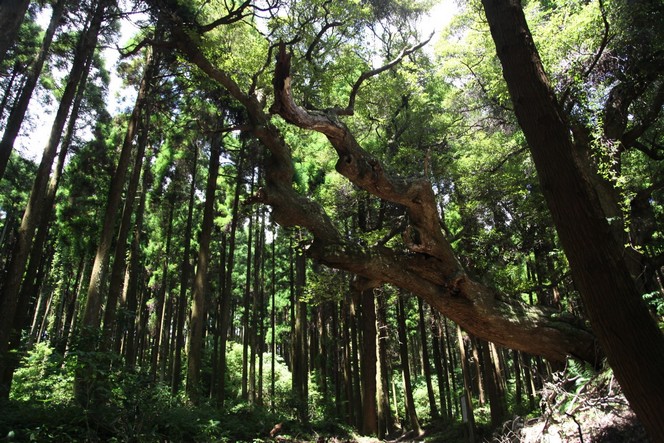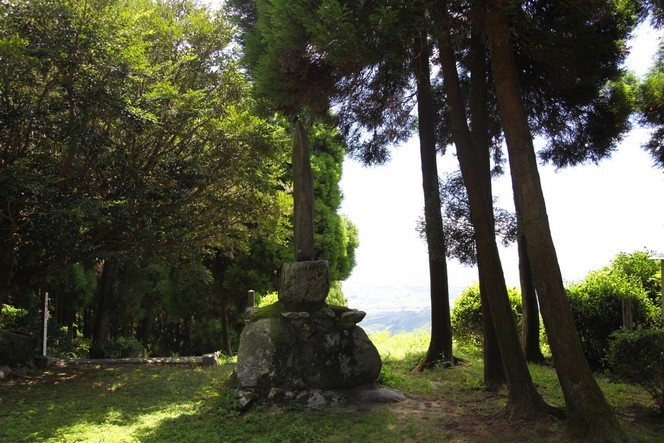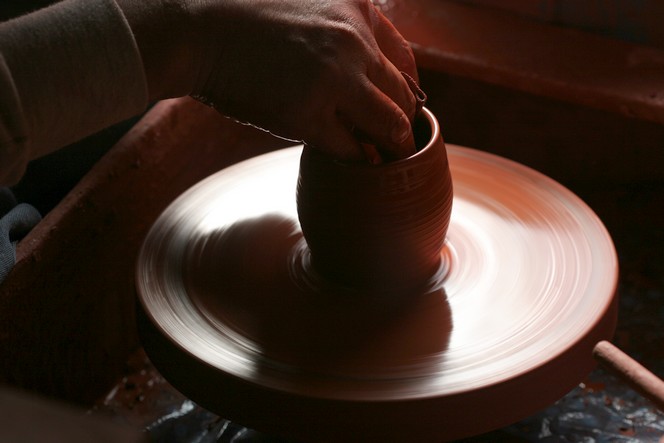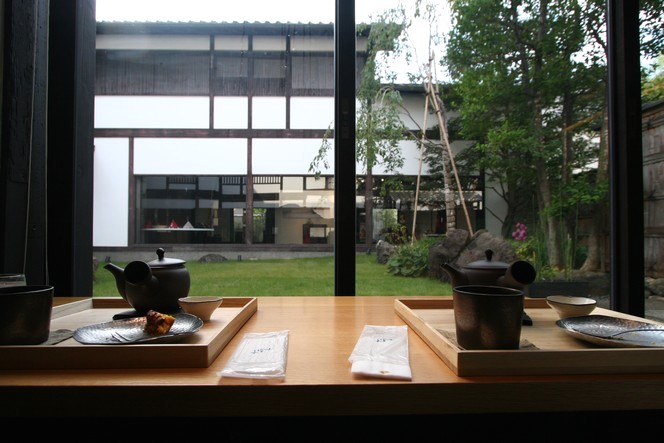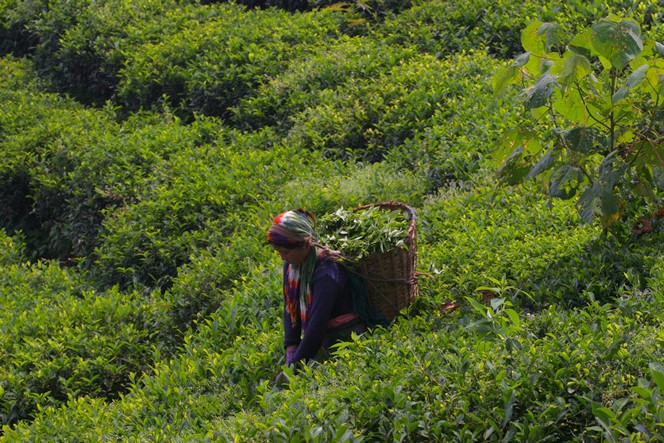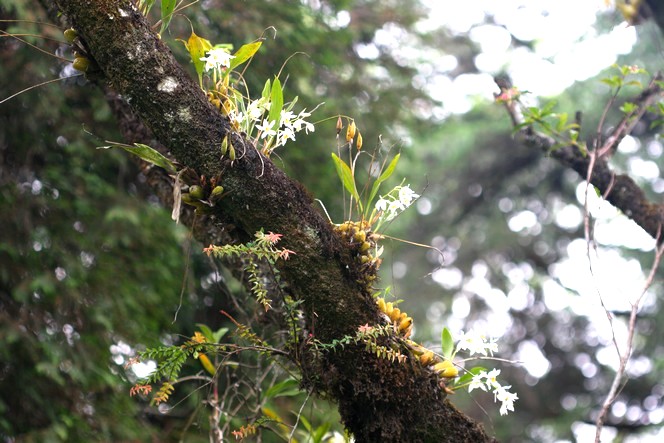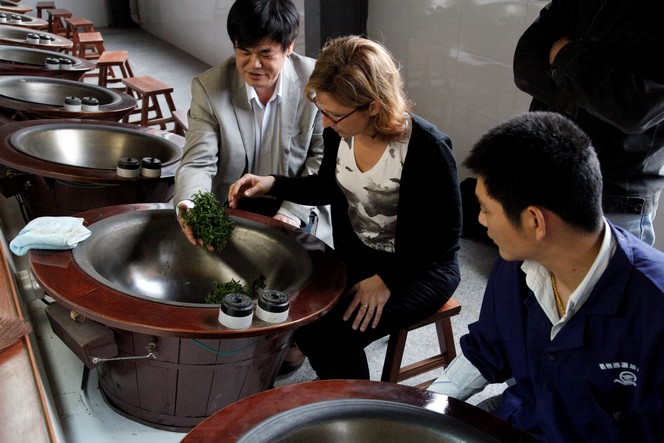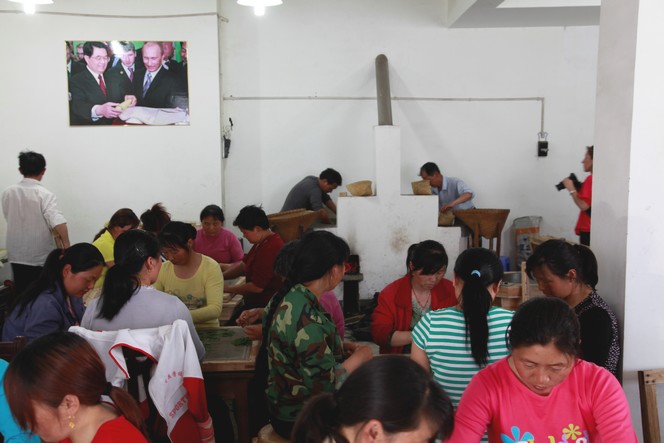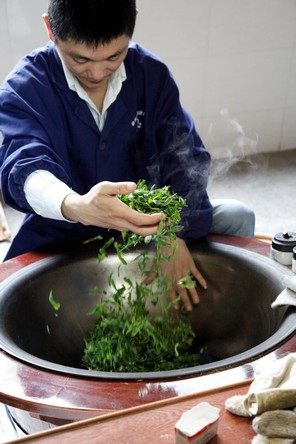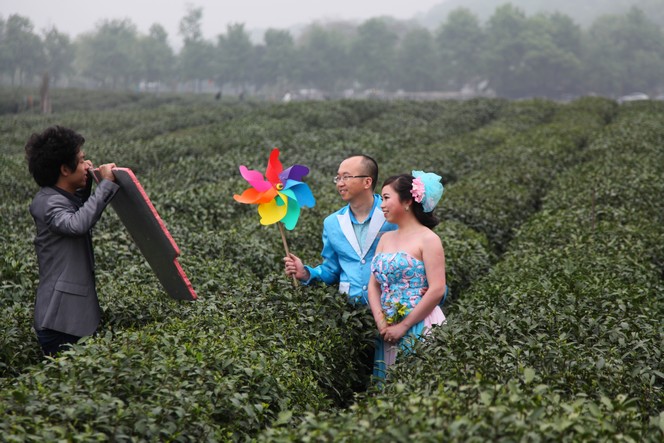It is worth visiting Japan’s first tea gardens. These ones were planted on the island of Kyushu, apparently around the 17th century. They are very small gardens, situated on the mountainsides. To visit them you must travel through dense forests, mainly made up of magnificent cryptomeria trees. You walk along a narrow, well-worn path and then, coming across a clearing, you discover a tea garden.
ARCHIVE FOR 2012
A stele worth a detour on the island of Kyushu
This stele may look unprepossessing, but for fans of Japanese teas it is worth a detour. The stone bears an inscription stating that it was in this place that the monk Eisai, who came from Long Jing in China, planted tea seeds he had brought with him. As for the rest, you can see the outlines of some Camellia Sinensis trees on the right. At the moment I’m on the island of Kyushu, near the city of Saga, where the story of Japanese tea began.
I should also mention that there are a few other similar stelae on the same mountain, bearing roughly the same inscription.
Tokoname, a well-known centre of Japanese ceramics
The Japanese city of Tokoname, situated not far from Nagoya, is one of the best known centres of ceramics. The city is home to well-known potters who work in their own studio, which is sometimes part of their house. Many make the famous “kyusus”, the small teapots that can be slightly flat in shape, with a handle perpendicular to the spout. They are used to make the best Gyokuros, or equally delicious Senchas.
The Zen Kashoin tea room in Kyoto
Tradition and modernity come together in Japan. This mix also applies to tea houses. In a city like Kyoto, for example, which is near where I’m staying at the moment, you will find establishments that are more than two hundred years old, which are really worth a detour. Personally, I like the peace and charm of a comfortable place with clean lines like the Zen Kashoin tea rooms, located in the city centre. There, you can enjoy matcha ice-cream and various pastries, accompanied by your favourite green tea.
Happy holidays to all my readers!
With many of you currently heading out of town, I dedicate this photo to you, and hope you enjoy your holidays. As for me, I’m surrounded by nature all year round in the tea fields, and I’ll continue to bring you news throughout the summer. The tea plants won’t stop growing while you’re at the seaside. And don’t forget to prepare a flask of your favourite iced tea to keep you cool on the beach!
Wild orchids growing around tea plantations
Spending your life in the tea fields does not prevent you from wandering around the tea plantations and raising your eyes to admire the nature around you. Here in Nepal, wild orchids grow right on the tree bark. Alongside them live many other delicately coloured flowers and mosses.
Carine Baudry helping in the making of a Long Jing
This year, during the Long Jing harvest, the team from Le Palais des Thés lent a hand – in the wok. Here, Carine Baudry, head of the Tea School, is listening carefully to the advice being given by Professor Liang. Yuerong Liang is director of the Tea Research Centre at the Agricultural University of Hangzhou. He explains the great skill involved in processing Long Jing: it requires an extremely precise hand movement, and you must be very careful not to burn yourself.
When you have taken part in the making of a tea, you appreciate it even more when it comes to tasting it.
The best Taiping Hou Kui is produced here
Taiping Hou Kui is known as a precious tea among the Chinese, but very few have had the opportunity of tasting it even once in their life.
Here, we are in Hou Kui, in the famous “Village of the Monkeys”, the birthplace of this tea and its most well-known production site. In the main factory of the village, employees work beneath the gaze of the Russian president, who is very fond of this fine Chinese tea and received some as a gift from Hu Jintao. The tea given by the Chinese president to his Russian counterpart was made in this very factory, so you can imagine the pride of all the workers.
If, like Vladimir Putin, you like Taiping Hou Kui, then this is the time to make the most of it. The 2012 plucking is now available.
How to make Long Jing
Long Jing is processed in a large wok. The work requires plenty of dexterity as the tea must be kept moving at all times. The leaves are withered, rolled and dried in a continuous process and in the same recipient, simply by varying the hand movement.
In the cup you will find a note of roast chestnut, which comes from this toasting of the leaves.
An unusual place to take wedding photos
If you’re looking for an unusual place to take your wedding photos, and like something a little different, why not try the Long Jing tea plantations (China). While his assistant reflects sunlight onto your radiant faces, the photographer will know just how to immortalise the special moment. Also, the same photographer will generally have some useful accessories to help your pictures stand out from others, instantly giving the happy couple a little more extra style.

